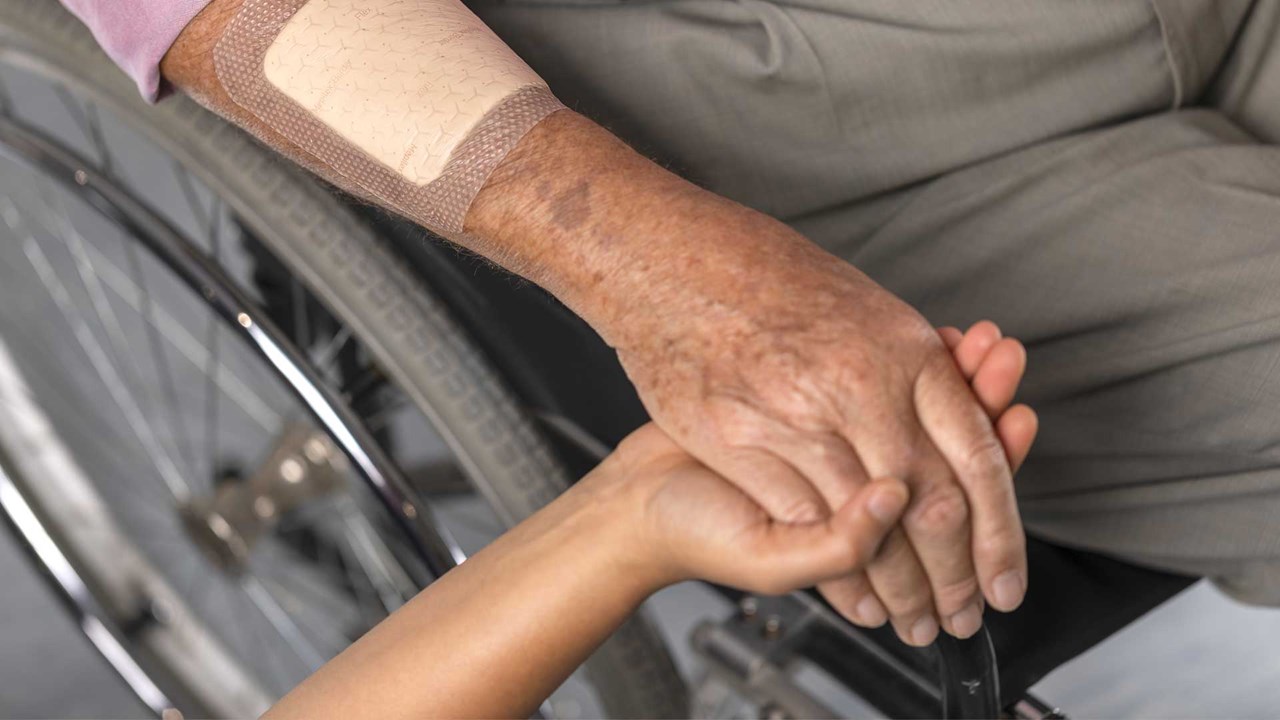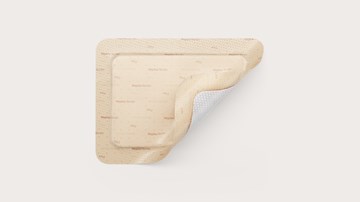Skin tears
The role of dressings in the management of skin tears

Until recently, the healthcare community has largely ignored and neglected the significant clinical burden and high costs associated with skin tears, meaning that skin tears have been poorly researched, documented and managed. Recently, however, more attention has been directed towards skin tears, reflecting the establishment of an International Skin Tear Advisory Panel (ISTAP) and the availability of improved wound care dressings.
ISTAP defines a skin tear as: “a wound caused by shear, friction, and/or blunt force resulting in separation of skin layers that can be partial thickness separation of the epidermis from the dermis) or full thickness (separation of both the epidermis and dermis from underlying structures)."
Commonly, skin tears are jagged and irregularly-shaped and, in most cases, are painful and slow to heal.
Aetiology
Although skin tears are found in all healthcare settings, they are most often found in elderly patients (>65 years of age), either at home, in hospital or in long-term care or retirement homes
The most common anatomical locations for skin tears are arms (48%), lower legs (40%), and hands (12%). Possible aetiological factors included blunt trauma such as banging into objects (44%), trauma associated with activities of daily living (20%) and falls (12%)
There are not many studies describing prevalence rates in neonates, even though skin tears are common in this population
Risk factors
Much still remains unknown about the risk factors for skin tears in the elderly, however the following six factors could be predictive in the development of skin tears
- Bruising
- Senile purpura
- Haematoma
- Evidence of a previously-healed skin tear
- Oedema
- Inability to reposition oneself independently
Skin properties can predict the development of skin tears in elderly patients. Risk factors which there may be some control include
- Transfer and falls
- Inadequate nutrition
- Polypharmacy
- Use of assistive devices
- Application and removal of stockings
- Removal of tape or dressings
- Blood draws
- Prosthetic devices
- Skin cleansers
Risk factors for skin tears in neonates mainly relate to the securing of medical life-saving devices to the pre-term skin, which is thin and extremely fragile. Using the last adhesive product is imperative as there us diminished cohesion between the dermis and the epidermis which ca be less than the bond between the epidermis and an adhesive product
Skin tear management
ISTAP Skin tear Tool Kit is designed to allow healthcare individuals to implement a systematic approach to the prevention, management and treatment of skin tears
The role of dressings in the management of skin tears
Key nursing priorities for skin tears are to assess, classify and treat the wound appropriately, to avoid complications and to select the most appropriate dressing that promotes a therapeutic, undisturbed environment favourable to the fastest healing. It is imperative to select a dressing that will allow for moist wound healing, create a seal around the wound edges in order to prevent leakage and minimise maceration. All the while respecting the fragile nature of the surrounding skin
In relation to patient needs, ideally, they would have a short hospital stay with as much as comfort and as little trauma to the wound as possible while the skin tear heals
Health economics
The usage of cyanoacrylate skin protectant offers savings in terms of reduced dressing costs and usage time compared with a daily petrolatum-impregnated gauze, positively impacting labour and resource utilisation
Dressing adhesive and its impact on the stratum corneum is key in health economics, particularly in relation to the ISATP recommendations not to use heavy fixators
'References'





